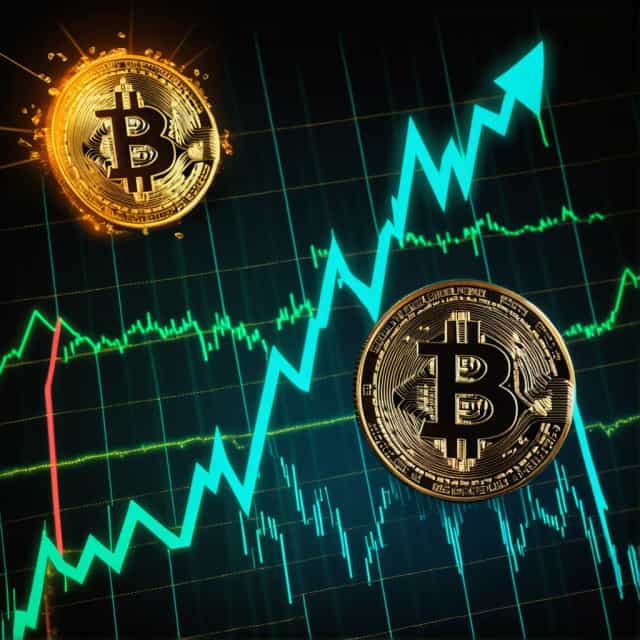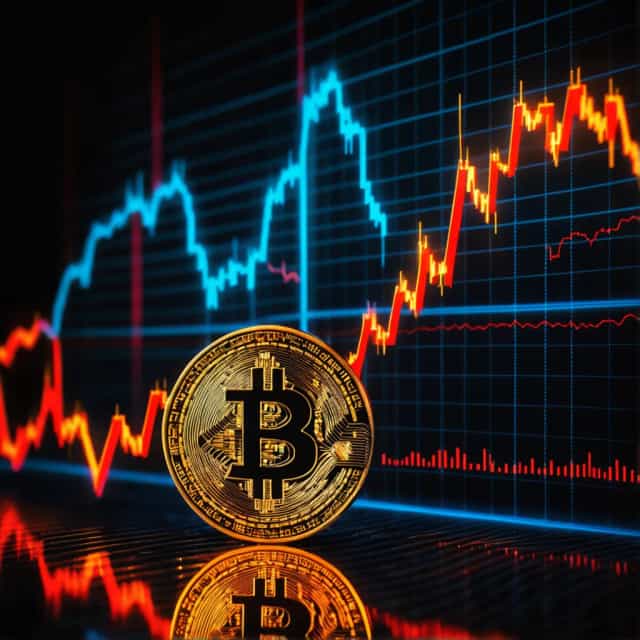
Image source: Block Media
Gold Price Volatility: Insights and Comparisons to Cryptocurrency Swings
Gold’s recent price volatility has sparked considerable debate among seasoned traders and market observers, who are now comparing its swings to the notoriously fluctuating cryptocurrency markets. Veteran trader Peter Brandt recently took to X (formerly Twitter) to underscore the dramatic nature of a $300 daily move in gold prices—a shift he likened to the hypothetical scenario of "every cryptocurrency dropping by 30% in a single day." Brandt backed his observation with a chart showing a $300 plunge in gold futures, emphasizing, “This is by no means a small event.”
Gold’s inherent stability as an asset, due to its limited supply and historical role as a store of value, makes such price movements stand out as extreme anomalies. Addressing younger investors and well-known gold proponent Peter Schiff, Brandt argued that while fluctuations of this magnitude might seem minor in comparison to cryptocurrency volatility, they are remarkable within the context of gold’s market characteristics. These swings indicate that even traditionally stable asset classes can exhibit significant turmoil, challenging preconceived notions about their reliability during economic uncertainty.
Gold and Silver Decline: Max Keiser’s Speculation on Manipulation
Alongside these wild movements in gold, a sharp decline in silver prices has captured attention. Notably, Bitcoin maximalist Max Keiser weighed in on the situation, introducing the theory that these declines may not be entirely organic. On October 21, Keiser pointed to the possibility of strategic maneuvers by the London Bullion Market Association (LBMA) aimed at reducing pressure on physical gold withdrawals. This speculation arises amid ongoing concerns about inadequate reserves of physical gold.
Keiser’s argument implies that the LBMA might employ price suppression tactics to stabilize demand and minimize the strain on gold inventories. By orchestrating such moves, Keiser suggests, the association seeks to maintain operational control over the market while preventing a potential run on physical gold. For investors eyeing precious metals as a hedge against inflation or volatility in the broader financial system, this narrative underscores the significance of physical ownership over paper representations of gold.
Keiser went a step further, suggesting that investors dissatisfied with the "cartel-like behavior" he attributes to entities such as the LBMA should respond by significantly increasing their acquisition of physical gold and silver. He proposed that doubling or tripling physical metal purchases could disrupt the delicate balance maintained by these organizations, potentially reshaping the precious metals market in favor of individual investors. Additionally, he speculated that such actions would ripple outward, benefiting other alternative assets like Bitcoin.
Gold, Silver, and Bitcoin: Interconnected Market Dynamics
Keiser's analysis extends beyond precious metals, tying their dynamics to Bitcoin’s market behavior. He posited that a substantial surge in physical demand for gold and silver could weaken the grip of entities allegedly manipulating Bitcoin’s price. In his view, if the physical market for gold and silver were to successfully undermine these organizational strongholds, it could remove barriers obstructing Bitcoin’s ascent. By shifting power away from established institutions, Keiser believes a more favorable scenario for Bitcoin enthusiasts could emerge.
This connection underscores the growing narrative of Bitcoin as "digital gold," aligning its role as an inflation-resistant asset with that of traditional precious metals. As gold and silver navigate periods of turbulence, Bitcoin continues to attract investors searching for alternative hedges in a rapidly evolving financial landscape. The interplay between these markets highlights the broader implications of fluctuations in both physical and digital stores of value.
A Glimpse Into Market Uncertainty and Opportunity
The extreme price swings in gold and sharp dips in the silver market signify a shifting landscape for investors and institutions alike. Veteran insights from Peter Brandt and provocative theories from Max Keiser bring attention to the complex dynamics underpinning precious metals and Bitcoin. While gold’s historical stability faces new challenges, the interconnected relationship between traditional and digital assets offers exciting opportunities for diversification.
As volatility in gold, silver, and cryptocurrency markets persists, investors should weigh their options carefully. Whether seeking to leverage precious metals for stability or exploring Bitcoin as an alternative hedge, these developments are a reminder of the unpredictable nature of financial markets and the potential for transformative shifts in traditional investment paradigms.










